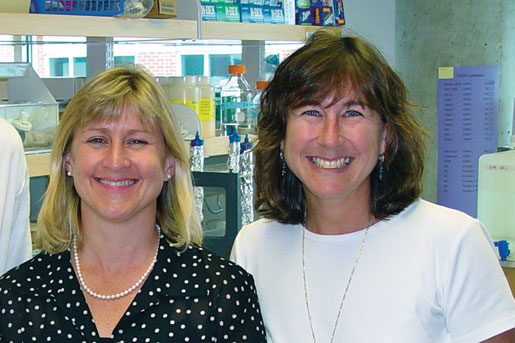One has gone north, another went south, so VIMS oceanographers became literal ‘polar opposites’
They share a first name and a passion for oceanography, but beginning in late January, professors Deborah Bronk and Deborah Steinberg of the Virginia Institute of Marine Science became polar opposites—literally.
Bronk, an international expert in ocean nitrogen, headed to Barrow, Alaska, to lead a team of VIMS graduate students and technicians studying the Arctic coastal ecosystem.
Steinberg, internationally recognized for her work on ocean carbon and zooplankton, will be leading her own team of graduate students and technicians into their fourth week of shipboard research in the waters off the Antarctic Peninsula.
Bronk’s research team, the self-styled “nitrogen snow ninjas,” will be working at 71 degrees north latitude in nearly continuous darkness during the depth of the Arctic winter. Steinberg’s zooplankton crew will be working between 65 and 70 degrees south latitude in nearly continuous daylight during the height of the Antarctic summer. The distance between the two research sites, as the arctic tern flies, is 10,289 miles.
What the two research teams share is their focus on better understanding how climate change is affecting polar ecosystems. Polar regions are warming faster than anywhere else on Earth, with a rise in average winter temperatures during the last 50 years of more than 7°F in the Arctic and more than 11°F along the Antarctic Peninsula.![]()
















